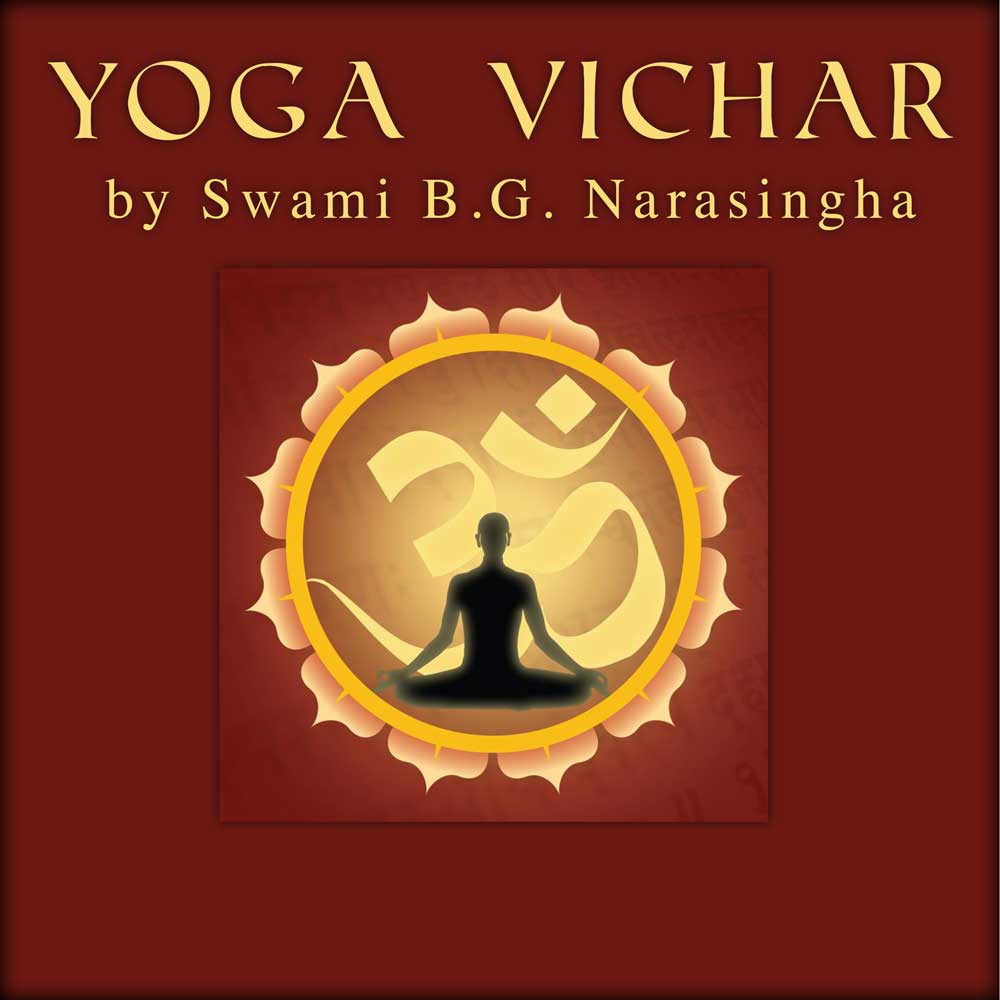Yoga Vichar
Chapter 2 – Evidence of Yoga in Various Cultures
Yoga appears in the archeological and literary records of civilisations other than that of India. Some scholars surmise that yoga was prevalent in Egyptian civilization, and other ancient societies, such as the Persians and Greeks, also practiced yogic meditations. Pythagorus is said to have gone to India and encountered the Gymnosophists, ‘the naked yogis of India.’ He also travelled to Egypt where he was initiated into Egyptian meditations. At the beginning of the 5th Century BCE, the Greek philosopher Empedocles taught meditation to his students. Empedocles said:
You must plunge beneath your crowded thoughts and calmly contemplate the higher realities with pure, focused attention. If you do this, a state of inspired serenity will remain with you throughout your life, shaping your character and benefiting you in so many ways. But if you direct your attention instead to the trivial things most people obsess about, the silly nonsense that dulls their minds, you will just acquire more objects which you will ultimately lose.
Later, Greek and Roman writers such as Strabo, Diogenes and Plutarch recorded some of the episodes of Alexander the Great’s exploits in India in the 4th Century BCE. In Strabo’s book Geographica, he cites Onesicritus, one of Alexander’s companions, who describes the Gymnosophists as practicing aloofness in “different postures – standing or sitting or lying naked and motionless.” Onesicritus says that these Gymnosophists considered the highest doctrine of life as “ridding the spirit not only of pain, but also pleasure”, believing that, “man trains the body in order that his opinions may be strengthened.”
Diogenes records how the Greek philosopher Pyrrho of Elis, was influenced by the Gymnosophists while travelling in India with Alexander, and on returning to Greece, imitated their habits.
In the 1st Century CE Plutarch recorded how Alexander captured ten Gymnosophists who had incited Sabbas (a local Indian king) to revolt against him. These Gymnosophists were said to be very intelligent, therefore Alexander decided to ask each of them a difficult question, declaring that he would put to death whoever gave an incorrect answer. Furthermore, the oldest amongst the Gymnosophists was made judge in the contest.
The first Gymnosophist was asked, “Who are more numerous, the living or the dead?” He replied, “The living are more numerous, since the dead no longer exist.”
The second Gymnosophist was asked whether the earth or the sea produced larger animals. He replied that the earth did, since the sea was but a part of the earth.
The third Gymnosophist was asked which animal was the most cunning. He replied that the most cunning animal was that which man has not yet discovered.
The fourth Gymnosophist was asked why he had encouraged Sabbas to revolt. He replied, “Because I wished him either to live nobly or to die nobly.” The fifth Gymnosophist was asked which was older, day or night. He replied, “Day – by one day!”
Alexander asked the sixth Gymnosophist how a man could be most loved. He replied, “If he is most powerful, yet does not inspire fear in others.”
The seventh Gymnosophist was asked how one might become a god instead of man. He replied, “By doing something that a man cannot do.”
The eighth Gymnosophist was asked which was the stronger, life or death. He answered, “Life is stronger, because it supports so many miseries.”
The ninth Gymnosophist was asked how long a man should live for. He replied, “Until death seems more desirable than life.”
Turning to the judge, Alexander asked him to give his opinion. The old Gymnosophist declared that each one had answered worse than the another. Upon hearing this Alexander said, “If that is true, then you should die for making such a poor judgement.”
“That cannot be,” said the judge, “Unless you lied when you said that you would put to death the one who gave the worst answer.” Alexander was impressed with the intelligence of the Indian Gymnosophists and dismissed them with gifts.
Many people, in and around the time of Jesus, such as Apollonius of Tyana (A Greek mystic), Simon Magus (a yogi famous for levitation) and Mani (a Gnostic Christian) also travelled to India where he was initiated into Buddhist meditations. The Gnostic tradition later entered Christianity and produced Christian texts that read like the Upanishads. Jesus himself is rumoured to have travelled to India and discussed Vedantic philosophy with the brahmanas of Jagannatha Puri. Generally speaking, we don’t think of Pythagoras, the Persians, the Greeks, the Egyptians and the early Christians as being yogis, but in fact, certain yoga practices were part of their development.
As a rule, people don’t consider Buddhism as a type of yoga either, but that is largely because they lack a sufficient understanding of the historical development of Buddhism. Although Buddhism is partially different in its ideology to Indian yoga, it is nonetheless yogic. Buddhists sit in the same asanas and use Sanskrit language (or Pali, a Sanskrit derivative) for their mantras and prayers. One of the most popular forms of Buddhism in the world is Tibetan Buddhism. The Tibetans were not originally Buddhists however but were a shamanistic culture. The Indian yogi, Padmasambhava travelled to Tibet and spread Tantric Buddhism there. Tibetan Buddhism is a mixture of Buddhism, shamanism, tantra and yoga.
In China there is the ancient system of Tai Chi, otherwise known as Chinese Yoga which has existed for centuries. In Japan we also find the Zen Buddhist tradition which is very yogic in its practices. Therefore, one could easily say that yoga was just as prevalent around the world in ancient times, as it is in our modern times.


